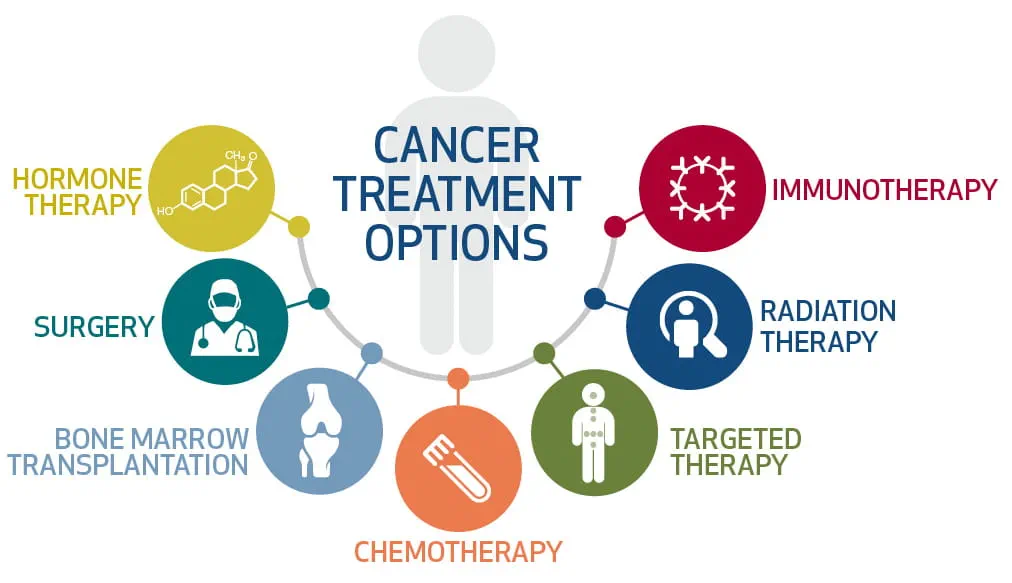Get This Report about Arogyajivan Medical Tourism For Oncology
Table of ContentsExcitement About Arogyajivan Medical Tourism For OncologyOur Arogyajivan Medical Tourism For Oncology PDFsThe smart Trick of Arogyajivan Medical Tourism For Oncology That Nobody is Talking AboutThe Facts About Arogyajivan Medical Tourism For Oncology UncoveredThe Facts About Arogyajivan Medical Tourism For Oncology RevealedThe Ultimate Guide To Arogyajivan Medical Tourism For OncologyGetting My Arogyajivan Medical Tourism For Oncology To Work
According to the American Cancer Society (ACS), medical professionals in the United States detect of cancer cells instances in individuals ages 50 years or older. Genetic variables can add to the advancement of cancer cells.Genetics also influence the cells' production of healthy proteins, and proteins lug many of the guidelines for mobile development and department. Some genetics transform healthy proteins that would typically repair broken cells. This to a predisposition for cancer cells. If a parent has these genetics, they may pass on the altered instructions to their spawn.
Fascination About Arogyajivan Medical Tourism For Oncology
Some genetic mutations that increase the risk of developing cancer cells happen after birth. These hereditary modifications trigger cancer cells a lot more commonly than inherited gene mutations.

Medical professionals classify cancer cells by its area in the body and the cells that it develops in. Improvements in cancer cells detection, boosted understanding of the risks of cigarette smoking, and a decline in cigarette use have all contributed to a year-on-year reduction in the number of cancer cells medical diagnoses and deaths.
All About Arogyajivan Medical Tourism For Oncology
Below are some common inquiries and responses concerning cancer. Some cancers create early symptoms, but others do not show signs till they are a lot more innovative. A lot of these signs and symptoms are usually from reasons cancer cells. The very best way to identify cancer very early is to report any kind of unusual, persistent symptoms to a physician so they can use guidance regarding any kind of additional screening that might be needed - ArogyaJivan Medical Tourism for Oncology.


After nonmelanoma skin cancer, bust cancer is the most typical kind in the United state
Examples of current methods include approachesConsist of radiation therapy, and surgery. Some individuals profit from newer alternatives, such as stem cell transplantation and precision medication. The diagnosis and fatality rates of cancer cells are going down yearly.
The major kinds of cancer treatments are introduced briefly on this web page and explained in information in their corresponding areas. Cancer medicines take years to make their way to people.
In the majority of cancers, numerous treatment alternatives should be made use of together (either at the exact same time, or together) to obtain the very best results. This figure compares the advantages and disadvantages of the 3 kinds of cancer treatment alternatives. In the left panel, a client has a lung cancer cells; in the magnifying listed below, there are cancer cells (in eco-friendly) and typical cells from bordering tissues (in this situation, lung).
Get This Report about Arogyajivan Medical Tourism For Oncology
The impacts of each treatment (radiation, surgical procedure, systemic treatment) are highlighted on the right; note that there are very important differences in exactly how these treatments affect the cancer cells and the person (defined listed below). With radiation treatment, 3D designs are produced of the growth and the bordering regular area. Radiation treatment is concentrated on the tumor, and the regular tissues are prevented (comparable to a magnifying glass focusing light).
at the time of surgery) capacity to (which may aid to eliminate the pushing of a tumor on close-by body parts); or it might be done prior to surgery to reduce growths to a dimension that makes them treatable with surgery (resectable). loved one for the patient (radiation can be provided from exterior of the body and focused on the tumor, is painless, and typically does not need anesthesia) (i.e.
Getting The Arogyajivan Medical Tourism For Oncology To Work
not getting rid of a breast, throat, or component of the stomach system, which would certainly have considerable adverse effect on a clients quality of life excitement of an against the lump The negative aspects of radiation treatment Read Full Article include: (e (ArogyaJivan Medical Tourism for Oncology).g. lung, heart), depending upon how close they are to the lump lack of ability to kill tumor cells that can not be seen on imaging scans and are as a result not always consisted of on the 3D designs used to plan the radiation This can consist of cancer in near-by lymph nodes or cancer cells that has actually infected far-off locations ()
This see is much more most likely with large growths. inability to ease in specific parts of the body (e.g. brain). This can lead to the need for surgical procedure. poor murder of cancer cells in locations that do not have a great supply of oxygen (e.g. in an area after surgical treatment; in a limb with a poor blood supply) enhanced occurrence in (e.g.
sometimes it should be delivered daily, 5 days each week, for 1-2 months) For much of human background, surgical procedure was the first line of therapy for numerous solid growths. With surgical procedure, an individual is taken to the operating space, placed under anesthetic, and the growth got rid of. For some cancers cells, the entire growth can not be removed, however a few of it can be removed, a process called debulking.
About Arogyajivan Medical Tourism For Oncology
in the brain, where certain chemotherapy can not get to) possible capacity to (the person may be healed with surgical procedure alone) capacity to consider the malignant tissue (Tissue examples can be examined to determine get redirected here the very best therapy options for that particular individual. If the individual has already been treated, the examples can be made use of to see just how the cancer cells replied to previous therapy to see if more of that treatment needs to be given or if the treatment requires to be changed.